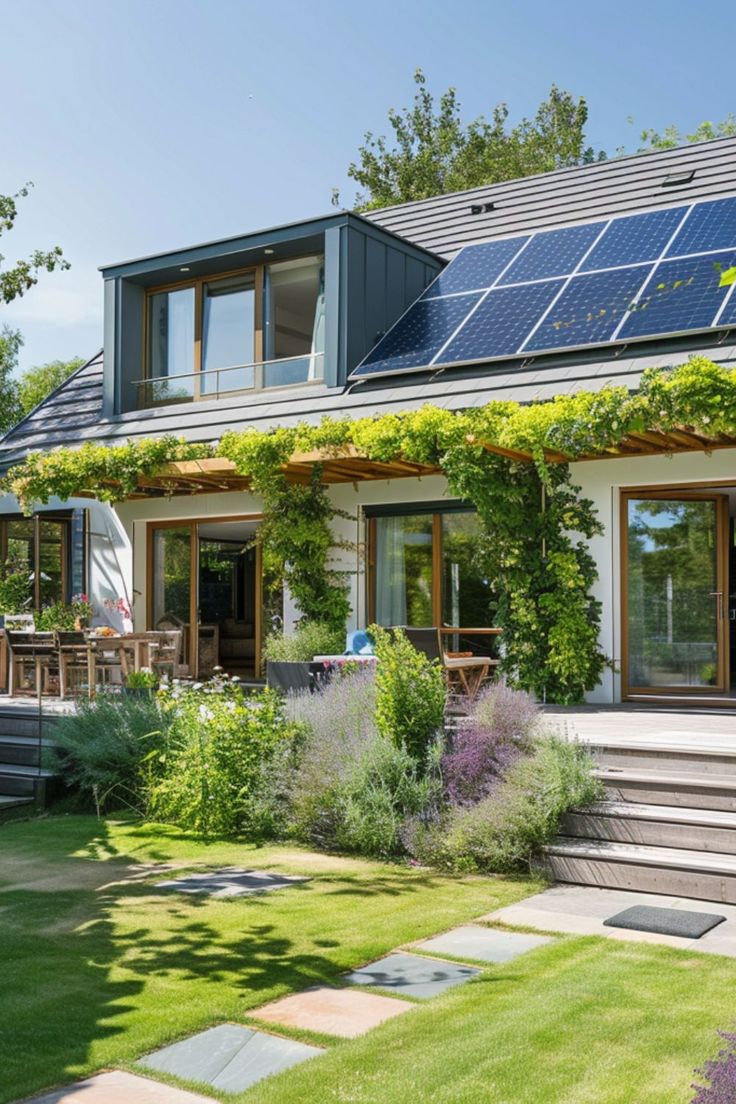
As we transition from the cool months of spring to the warmer temperatures of summer, it’s the perfect time to assess your property’s energy efficiency. Making a few simple changes now can save you money on cooling costs, reduce your environmental impact, and ensure that your home remains comfortable year-round. Here are some essential steps to take this April to prepare your property for the warmer months ahead and improve your home’s overall energy efficiency.
1. Inspect and Service Your HVAC System
Your HVAC system works hard to maintain a comfortable temperature in your home, and ensuring it’s running efficiently will save you both energy and money. In April, schedule a professional inspection and cleaning for your air conditioning system before the heat sets in. Here’s what to check:
- Replace air filters: Clogged or dirty filters reduce airflow, making your system work harder. Replace filters every 1-3 months to improve efficiency.
- Clean the vents and ducts: Dust and debris in your vents can affect airflow and air quality. Have them cleaned to improve system performance.
- Check refrigerant levels: An air conditioner low on refrigerant won’t cool efficiently. A professional can check and refill it as needed.
- Ensure proper insulation around ducts: Leaks or poor insulation in your ducts can waste energy and increase cooling costs.
2. Seal Windows and Doors to Prevent Air Leaks
Even a small draft can cause significant energy loss, especially as temperatures rise. In April, it’s important to inspect your home for air leaks around windows, doors, and any other openings.
- Check for gaps: Look for cracks or gaps in the seals around windows and doors. You can fix these by applying weather stripping or caulking.
- Upgrade to energy-efficient windows: If your windows are old or single-paned, consider upgrading to energy-efficient double-paned windows that provide better insulation.
- Use draft stoppers: Place draft stoppers along the bottoms of doors to prevent warm air from entering and cool air from escaping.
3. Insulate Attics and Ceilings
Many homes lose a significant amount of energy through the roof, especially during the summer. Proper attic insulation is crucial in regulating indoor temperatures.
- Inspect attic insulation: Check if your attic is properly insulated. You can add more insulation if needed to help keep the cool air inside during the warmer months.
- Seal attic vents: Make sure attic vents are properly sealed to prevent warm air from entering and affecting your cooling system.
4. Upgrade to Energy-Efficient Appliances
With warmer weather, you’ll likely rely more on appliances such as refrigerators, fans, and air conditioners. If you’re using older models, they may be wasting energy. This is a great time to consider upgrading to energy-efficient appliances that are designed to use less energy.
- Energy-efficient air conditioners: Look for air conditioners with high SEER ratings (Seasonal Energy Efficiency Ratio) to reduce electricity consumption.
- Energy Star-rated appliances: For all appliances, check for the Energy Star label to ensure that they meet high-efficiency standards.
5. Optimize Your Home’s Landscaping for Energy Savings
Your landscaping can help lower your cooling costs by providing natural shade and reducing heat absorption.
- Plant shade trees: Strategically planted trees can block direct sunlight from hitting your home, reducing the amount of heat that enters.
- Install shading devices: Use outdoor shades, awnings, or pergolas to protect windows from the sun’s rays, especially on the west and south-facing sides of your house.
- Consider reflective roofing materials: For new roofing projects, consider reflective roofing or cool roofs, which can reflect more sunlight and reduce the need for air conditioning.
6. Use Ceiling Fans to Circulate Air
Ceiling fans are a cost-effective way to help cool your home without relying heavily on air conditioning. In April, check that your ceiling fans are in good working condition.
- Switch the fan direction: Ensure your fan is set to rotate counterclockwise in the warmer months to help create a cool breeze that circulates air in the room.
- Use fans in combination with your AC: Ceiling fans help cool a room by circulating air, which means you can set your thermostat a few degrees higher, saving energy while still staying comfortable.
7. Opt for Energy-Efficient Lighting
As the days get longer, it’s important to make sure your lighting is energy-efficient. This simple switch can help lower your electricity bill.
- Switch to LED bulbs: If you haven’t already, replace incandescent bulbs with energy-efficient LED lights. LEDs use less energy and last longer than traditional bulbs.
- Install motion sensors: For areas like hallways or bathrooms, install motion-sensing lights to automatically turn lights off when not in use.
8. Use Smart Thermostats
A smart thermostat can be a game-changer for energy savings. These devices allow you to program your thermostat to automatically adjust the temperature based on your schedule, reducing energy consumption when you’re not at home.
- Set temperature schedules: Program your thermostat to raise the temperature when you’re away or asleep and lower it when you’re home.
- Remote Control: Many smart thermostats allow you to adjust settings from your phone, ensuring your home stays comfortable without wasting energy.
9. Clean and Maintain Your Refrigerator
The refrigerator works overtime in the warmer months. Keeping it clean and efficient can help save energy.
- Clean condenser coils: Dust and dirt on the coils can make your fridge work harder. Clean them at least once a year to improve efficiency.
- Check the door seals: Ensure the seals are tight and free from cracks. If the door doesn’t close properly, cool air can escape, making your fridge work harder.
10. Monitor Your Energy Use
Finally, track your energy usage to identify areas for improvement. Many electric companies provide smart meters or apps that give you insights into your home’s energy consumption. You can also install a home energy monitor to track which appliances or systems use the most energy.
Conclusion: Stay Cool and Save Big This Summer
April is the perfect time to get your home ready for warmer weather while improving energy efficiency. By performing a few key maintenance tasks, you can lower your utility bills, make your home more comfortable, and reduce your environmental impact. Taking the time to optimize your property now will pay off all summer long.
If you need assistance with any of these maintenance tasks or want to schedule a professional inspection, Overtime Building Maintenance is here to help! Contact us today to ensure your home is prepared for the warmer months ahead.





